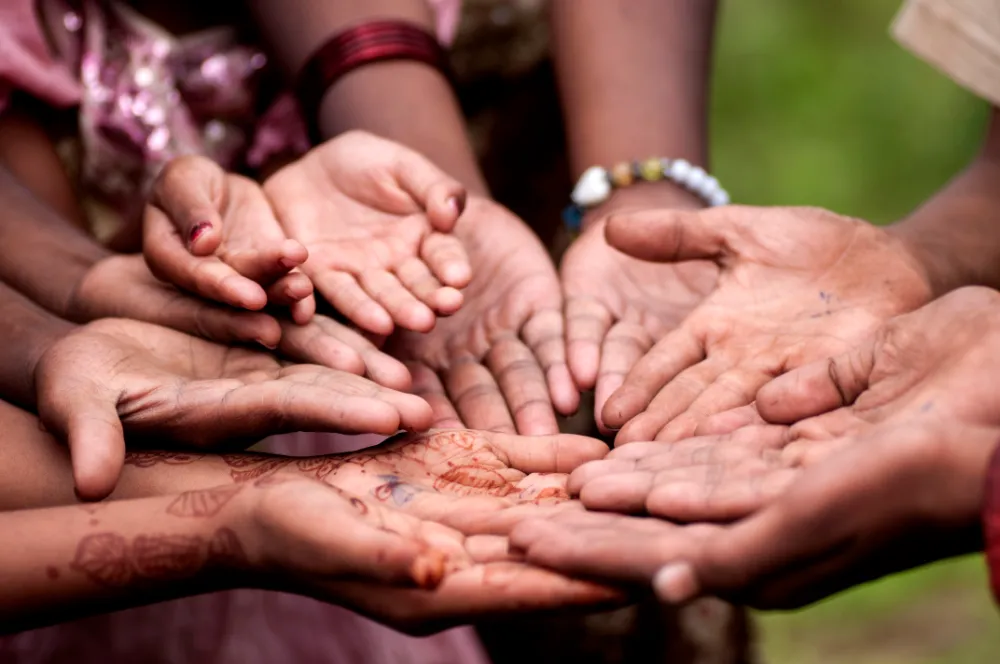Large NGOs are more than just charitable organizations — they are global powerhouses that operate across continents, mobilize billions in funding, and employ thousands of professionals and volunteers. In 2025, the biggest NGOs worldwide are playing a critical role in tackling humanitarian crises, advancing human rights, alleviating poverty, and driving sustainable development. Their influence extends beyond charity, shaping public policy, international cooperation, and even global markets.
What Defines a Large NGO?
A “large” NGO is typically defined by a combination of factors:
-
Scale of Operations – active in dozens of countries with diverse programs.
-
Funding Volume – annual budgets often exceeding hundreds of millions or even billions of euros.
-
Workforce Size – employing thousands of staff and engaging vast volunteer networks.
-
Global Reach – delivering aid, education, healthcare, and advocacy worldwide.
These characteristics set them apart from smaller, local NGOs that focus on niche or regional issues. Large NGOs have the power to mobilize quickly in emergencies while sustaining long-term development initiatives.
Why Large NGOs Matter in 2025
The year 2025 highlights just how essential large NGOs have become:
-
The climate crisis demands global-scale interventions that only well-funded NGOs can deliver.
-
Humanitarian emergencies, from refugee crises to conflicts, require the largest humanitarian organizations to step in with logistics, funding, and expertise.
-
Public trust in institutions is fragile, and NGOs serve as a bridge between citizens and governments, advocating for accountability and fairness.
By addressing complex global issues, large NGOs ensure that humanitarian aid and development efforts are not just temporary fixes but pathways to systemic change.
Biggest NGOs Worldwide 2025: A Snapshot
While this article will dive deeper into the top international NGOs in the next section, it’s important to recognize their collective power:
-
They employ more than a million people worldwide across humanitarian, development, and advocacy roles.
-
They manage combined annual revenues of over $50 billion, sourced from governments, private donors, corporations, and foundations.
-
Their programs span everything from child welfare and refugee aid to climate action and sustainable agriculture.
These organizations are not only service providers but also agenda setters, influencing policies at the United Nations, European Union, and national governments.
The Relevance for Donors, Professionals, and Researchers
Understanding large NGOs is crucial for:
-
Donors seeking transparency and impact for their contributions.
-
Job seekers exploring careers in international development, human rights, and humanitarian aid.
-
Researchers and policymakers analyzing global trends and sector challenges.
For professionals in the nonprofit sector, knowing how large NGOs operate provides insights into best practices in financial accountability, grant management, and transparency — areas where specialized support like NGO Finance Hub services becomes essential.
Key Takeaway
Large NGOs dominate the nonprofit landscape in 2025. Defined by their global reach, financial strength, and operational capacity, they are shaping the future of humanitarian aid and sustainable development. To understand their true impact, we must examine who the largest NGOs in the world are and what makes them leaders in driving change.
Top Largest NGOs in the World in 2025
When we look at the top international NGOs in 2025, several names stand out for their massive reach, humanitarian impact, and financial scale. These largest humanitarian organizations operate across continents, managing billions in funding and supporting millions of people worldwide.
World Vision International
One of the biggest NGOs worldwide 2025, World Vision is a Christian humanitarian organization working in nearly 100 countries. With an annual budget surpassing $2.5 billion, it focuses on child welfare, education, healthcare, and disaster relief. Its sponsorship model connects millions of donors directly to children in need.
Mercy Corps
Operating in over 40 countries, Mercy Corps is known for responding to humanitarian crises and supporting economic development. With strong programs in conflict zones and climate-affected regions, it empowers communities to build resilience against poverty and disasters.
Oxfam International
A confederation of 21 member organizations, Oxfam addresses poverty, inequality, and social justice. It runs large-scale humanitarian relief during emergencies while advocating for systemic changes in trade, taxation, and gender equality.
BRAC (Bangladesh Rural Advancement Committee)
Often ranked among the largest NGOs globally, BRAC started in Bangladesh and now operates in multiple countries. Its programs focus on microfinance, education, healthcare, and women’s empowerment. BRAC manages a budget exceeding $1 billion annually, making it one of the most financially robust NGOs worldwide.
International Rescue Committee (IRC)
The IRC provides humanitarian aid to refugees and displaced people in over 40 countries. Known for its work in conflict areas such as Syria and Afghanistan, it also supports refugee integration in Europe and the U.S. Its annual revenue exceeds $900 million.
Save the Children
With a presence in over 120 countries, Save the Children advocates for children’s rights, education, and health. It is one of the most recognized global NGOs, with an annual income above $2 billion. It plays a leading role in responding to child crises caused by war, famine, and disasters.
Amnesty International
Focused on human rights advocacy, Amnesty International is active in more than 150 countries. With millions of members worldwide, it campaigns against injustice, defends freedom of expression, and challenges human rights abuses through lobbying and research.
Danish Refugee Council (DRC)
A major humanitarian actor in Europe and globally, the DRC provides aid to refugees and internally displaced persons. It manages programs in protection, shelter, and integration, funded by both governments and private donors.
CARE International
With operations in more than 100 countries, CARE focuses on poverty reduction, gender equality, and humanitarian response. Its programs reach tens of millions of people annually, making it one of the most impactful global NGOs.
Acumen
While smaller in scale compared to World Vision or Oxfam, Acumen is a leader in impact investing. It funds innovative businesses tackling poverty and sustainability challenges, redefining how NGOs engage in economic development.
Key Takeaway
The largest NGOs in the world in 2025 are diverse in their missions but united in scale, innovation, and impact. From child sponsorship to refugee aid and human rights, these organizations set the standard for global nonprofit leadership.
Key Metrics for Measuring NGO Size and Impact
When evaluating the largest NGOs worldwide in 2025, size alone isn’t determined by name recognition. Analysts, donors, and researchers measure NGOs by several core metrics: workforce size, funding and revenue, geographic reach, and social outcomes. These benchmarks provide a clearer picture of influence, sustainability, and long-term impact.
NGO Workforce Size: Employees and Volunteers
The NGO workforce size is one of the most telling indicators of an organization’s capacity. Large NGOs often employ tens of thousands of staff globally while coordinating hundreds of thousands of volunteers. For example:
-
World Vision International – over 35,000 employees and a vast volunteer network.
-
Save the Children – more than 25,000 employees across 120 countries.
-
BRAC – employs around 100,000 people, making it one of the largest NGO employers in the world.
This massive workforce allows NGOs to operate both at grassroots and international policy levels.
Funding and Revenue of Large NGOs
The funding and revenue of large NGOs determine how much humanitarian and development work they can deliver. In 2025, several NGOs manage multi-billion-dollar budgets:
-
World Vision – approx. $2.5 billion annually.
-
Oxfam International – about $1 billion in combined member revenue.
-
BRAC – surpasses $1 billion annually, with diversified income from microfinance, social enterprises, and donors.
Funding sources include:
-
Government grants (EU, USAID, UN agencies).
-
Private donations from individuals, corporations, and philanthropists.
-
Earned income through social enterprises or partnerships.
Geographic Reach and Program Scope
Another way to measure NGO size is by geographic presence and program coverage:
-
Save the Children operates in over 120 countries, focusing on education, nutrition, and child protection.
-
International Rescue Committee (IRC) works in 40+ countries, often in the world’s most dangerous conflict zones.
-
CARE International has projects in 100+ countries, prioritizing poverty alleviation and women’s empowerment.
These expansive networks allow NGOs to mobilize during global crises while maintaining long-term development programs.
Social and Environmental Outcomes
Size and revenue mean little without measurable results. That’s why NGOs increasingly focus on social impact metrics, such as:
-
Number of children educated or immunized.
-
Tons of food aid delivered.
-
Refugees provided with housing and protection.
-
CO₂ emissions reduced through climate programs.
For example, in 2024, Oxfam reported reaching 15 million people through humanitarian responses, while CARE provided aid to over 100 million people worldwide.
Key Takeaway
Evaluating large NGOs requires more than looking at budgets. Their workforce size, revenue, geographic footprint, and measurable outcomes define their global influence. These metrics help donors, governments, and the public trust that resources are creating real, tangible change.
Leading NGOs in the UK and Their Areas of Focus
The UK has long been home to some of the largest and most influential NGOs, many of which rank among the top international NGOs worldwide. These organizations lead humanitarian response, child protection, environmental advocacy, and human rights campaigns. In 2025, UK leading NGOs continue to set the benchmark for transparency, innovation, and global collaboration.
Oxfam UK
One of the most recognized charities in the world, Oxfam UK plays a central role in the Oxfam confederation. Its focus areas include poverty eradication, women’s rights, climate change, and humanitarian relief. In 2025, Oxfam is scaling up campaigns on global inequality and fair trade, making it not just a humanitarian actor but also a policy influencer.
Save the Children UK
With operations in over 120 countries, Save the Children UK is dedicated to child welfare, healthcare, and education. It runs major campaigns for child refugees, girls’ education, and malnutrition. Its UK branch provides both domestic child advocacy and global program support, contributing to its $2 billion annual income worldwide.
British Red Cross
As part of the International Red Cross and Red Crescent Movement, the British Red Cross delivers emergency aid both domestically and abroad. It is particularly active in disaster response, refugee support, and health emergencies, making it one of the largest humanitarian organizations in Europe.
ActionAid UK
ActionAid UK is a global NGO headquartered in London, known for its grassroots development programs. Its key focus areas include women’s rights, education, food security, and climate resilience. ActionAid also plays an advocacy role, influencing UK government policies on aid and international development.
Amnesty International UK
The UK section of Amnesty International is central to the global human rights movement. Its campaigns on freedom of expression, political prisoners, and human rights defenders attract massive public support. With millions of members worldwide, Amnesty is among the most powerful NGOs in terms of advocacy and mobilization.
How UK NGOs Compare Globally
While UK leading NGOs may not always match the workforce size of BRAC or the budgets of World Vision, they excel in:
-
Advocacy and policy influence at the UN, EU, and national governments.
-
Campaigning capacity – mobilizing millions of citizens for causes.
-
International collaboration – often serving as hubs for multi-country projects.
These strengths make UK NGOs vital players in both domestic and global development.
Key Takeaway
The leading NGOs in the UK—from Oxfam to Amnesty International—continue to shape global humanitarian and advocacy agendas. Their influence lies not only in delivering aid but also in mobilizing public support and driving systemic change.
Trends Shaping the NGO Sector in 2025
The nonprofit landscape is evolving rapidly, and large NGOs are adapting to new realities. From funding pressures to digital transformation, the NGO sector trends 2025 highlight how organizations must innovate to remain impactful and trustworthy.
1. Growing Emphasis on Sustainability and Innovation
Donors and governments increasingly expect NGOs to align their programs with the UN Sustainable Development Goals (SDGs). The largest humanitarian organizations are integrating sustainability into every aspect of their operations—from carbon-neutral logistics in humanitarian aid to renewable energy projects in rural communities.
-
NGO innovation and sustainability now go hand-in-hand.
-
Organizations like BRAC and Oxfam are piloting climate-resilient farming programs.
-
CARE International is investing in gender-inclusive green energy initiatives.
This shift ensures NGOs remain relevant in addressing long-term global challenges.
2. Diversification of Funding Models
Historically, many large NGOs depended heavily on government grants. In 2025, funding diversification is essential to reduce vulnerability to political and economic shifts.
Key trends include:
-
Private sector partnerships with corporations funding social impact programs.
-
Growth of impact investing and social enterprises (e.g., Acumen’s model).
-
Expanding individual giving and digital fundraising platforms to reach younger donors.
By diversifying funding, NGOs strengthen their independence and long-term financial sustainability.
3. Technology and Data-Driven Operations
Technology adoption is transforming nonprofit operations worldwide. From donor relations to program delivery, large NGOs are investing in digital solutions:
-
AI-powered monitoring and evaluation to measure program impact in real-time.
-
Blockchain for transparency, especially in tracking humanitarian aid distribution.
-
Cloud-based platforms that allow teams across continents to collaborate securely.
For example, the International Rescue Committee has piloted data dashboards that provide instant insights on refugee camp conditions. This kind of digital transparency builds donor confidence and accelerates aid delivery.
4. Accountability and Transparency Under Scrutiny
Public trust remains the lifeline of NGOs. In 2025, there is heightened scrutiny of nonprofit accounting compliance, donor fund allocation, and impact measurement. NGOs are expected to:
-
Publish detailed annual financial reports.
-
Demonstrate measurable outcomes tied to donations.
-
Adopt international frameworks like IFR4NPO to standardize financial reporting.
Failure to meet these standards can risk donor attrition and reputational damage.
Key Takeaway
The NGO sector trends 2025 reflect a dynamic shift: sustainability, funding diversification, technology integration, and transparency are no longer optional but essential. The largest NGOs worldwide are leading these changes, proving that innovation and accountability are the future of global humanitarian and development work.
Frequently Asked Questions (FAQs) About Large NGOs
Understanding large NGOs often raises practical questions from donors, professionals, and researchers. Below, we address the most common inquiries about the biggest NGOs worldwide 2025 and their operations.
What defines a large NGO versus a small NGO?
A large NGO is typically defined by its budget, workforce, and global reach. While smaller NGOs may work locally with limited funds, large NGOs often operate in dozens of countries with annual revenues exceeding hundreds of millions or even billions of euros. For example, World Vision International and Save the Children run billion-dollar programs, whereas local grassroots NGOs focus on specific communities.
How do large NGOs sustain their operations globally?
Large NGOs sustain their work through diversified funding sources:
-
Government grants and subsidies (EU, USAID, UN agencies).
-
Private donations from individuals, corporate sponsors, and philanthropists.
-
Social enterprises and impact investing (e.g., BRAC runs microfinance and social businesses).
By diversifying income, these organizations reduce dependency on single funding streams and ensure long-term stability.
Which NGO has the largest workforce?
In terms of NGO workforce size, BRAC is among the largest, employing over 100,000 staff worldwide. Others like World Vision and Save the Children employ tens of thousands and rely on vast volunteer networks. Workforce size matters because it determines the scale and speed of NGO responses to humanitarian crises.
What are the major funding sources for large NGOs?
The funding and revenue of large NGOs typically come from:
-
Institutional donors (governments, international agencies).
-
Individual donations and child sponsorships.
-
Foundations and corporate partnerships.
-
Earned income through social innovation.
For example, Oxfam International combines public donations with institutional grants, while Acumen leverages impact investment funds.
How do large NGOs measure their impact?
Impact is measured through quantifiable outputs and outcomes, such as:
-
Number of children educated or immunized.
-
Number of refugees sheltered and supported.
-
Lives improved through climate or development projects.
-
Advocacy outcomes, like laws changed or policies influenced.
Most large NGOs now use data dashboards and annual impact reports to provide transparent results.
How do UK NGOs compare globally?
UK leading NGOs such as Oxfam UK, Save the Children UK, and Amnesty International UK may not have the same workforce scale as BRAC or World Vision, but they excel in policy advocacy, global campaigns, and public mobilization. They are recognized for shaping development agendas and influencing government policies in the UK and internationally.
What challenges do large NGOs face in 2025?
Despite their scale, large NGOs face growing challenges:
-
Donor scrutiny and accountability pressures.
-
Adapting to technology and digital transformation.
-
Geopolitical barriers in conflict zones.
-
Sustainability demands, requiring climate-smart approaches.
These challenges make transparency and innovation central to future success.
Case Study Spotlight: BRAC vs World Vision International
To better understand the scale and influence of large NGOs, it’s useful to compare two of the biggest NGOs worldwide 2025: BRAC (Bangladesh Rural Advancement Committee) and World Vision International. Both organizations operate on a massive scale, but they differ in their funding models, workforce, and program priorities.
Workforce and Global Reach
-
BRAC employs over 100,000 staff worldwide, making it one of the largest employers in the nonprofit sector. Although it started in Bangladesh, it now operates across Asia, Africa, and beyond.
-
World Vision International, by contrast, has a workforce of around 35,000 employees and a vast volunteer network across nearly 100 countries. Its global presence gives it the ability to mobilize quickly in crises.
While BRAC has the largest workforce, World Vision’s geographic reach is broader, giving it a wider footprint.
Funding and Revenue
-
BRAC generates over $1 billion annually, with a unique mix of donor funding, microfinance, and social enterprises. Its financial sustainability is bolstered by income-generating businesses, which reduce reliance on external donors.
-
World Vision International manages an even larger budget of over $2.5 billion, primarily funded through child sponsorship programs, private donations, and government grants.
This illustrates two contrasting models: BRAC’s hybrid funding approach vs World Vision’s donor-driven sponsorship and grants.
Program Priorities
-
BRAC focuses heavily on poverty alleviation, microfinance, women’s empowerment, education, and healthcare. Its grassroots development model empowers local communities to sustain long-term change.
-
World Vision International emphasizes child protection, disaster relief, food security, and health programs. Its child sponsorship program connects millions of donors directly to individual children, building strong donor trust.
While BRAC drives systemic development through community-led initiatives, World Vision excels in child-focused humanitarian aid.
Impact and Recognition
-
BRAC has been recognized for scaling social enterprises and pioneering models that other NGOs replicate globally.
-
World Vision is considered one of the largest humanitarian organizations in disaster response, particularly in crises like the Syrian refugee emergency or natural disasters.
Both organizations are frequently ranked in NGO global impact rankings, but they highlight different strengths: BRAC in sustainable development and World Vision in humanitarian relief.
Key Takeaway
The comparison of BRAC and World Vision International showcases the diversity of approaches among large NGOs. BRAC leads in scale of workforce and grassroots development, while World Vision dominates in global humanitarian response and donor engagement. Together, they represent the dual engines of international NGOs: long-term poverty reduction and immediate crisis response.
The landscape of large NGOs in 2025 demonstrates the immense scale, influence, and responsibility these organizations carry. From World Vision International and Save the Children to BRAC and Amnesty International, the biggest NGOs worldwide are more than charities — they are global institutions shaping policies, responding to crises, and empowering communities.
Why Large NGOs Matter
Large NGOs succeed because of their:
-
Massive reach – operating in dozens of countries across multiple sectors.
-
Funding strength – managing annual revenues in the billions.
-
Dedicated workforce – combining professional staff and global volunteers.
-
Accountability standards – publishing transparent financial and impact reports.
They not only deliver aid but also set agendas in humanitarian policy, human rights, and sustainable development. Their NGO global impact rankings reflect this unmatched scale and influence.
Challenges They Face in 2025
Despite their size, large NGOs are not without challenges:
-
Increasing donor demand for financial transparency.
-
Adapting to climate crises and conflict-driven humanitarian needs.
-
Navigating new compliance regulations across different countries.
-
Balancing innovation with accountability, especially in funding and revenue streams.
This makes strong financial management and nonprofit accounting compliance more important than ever.











